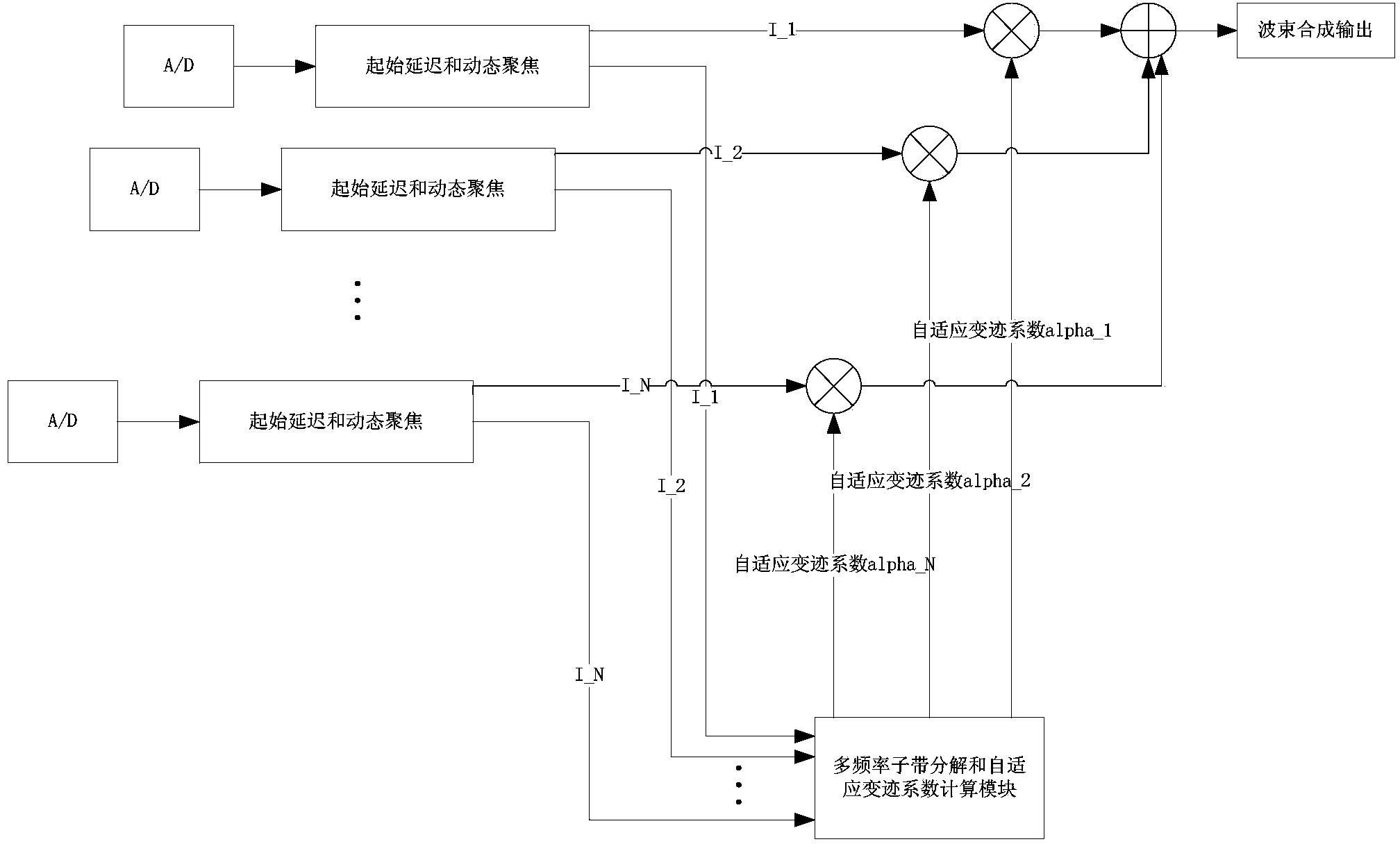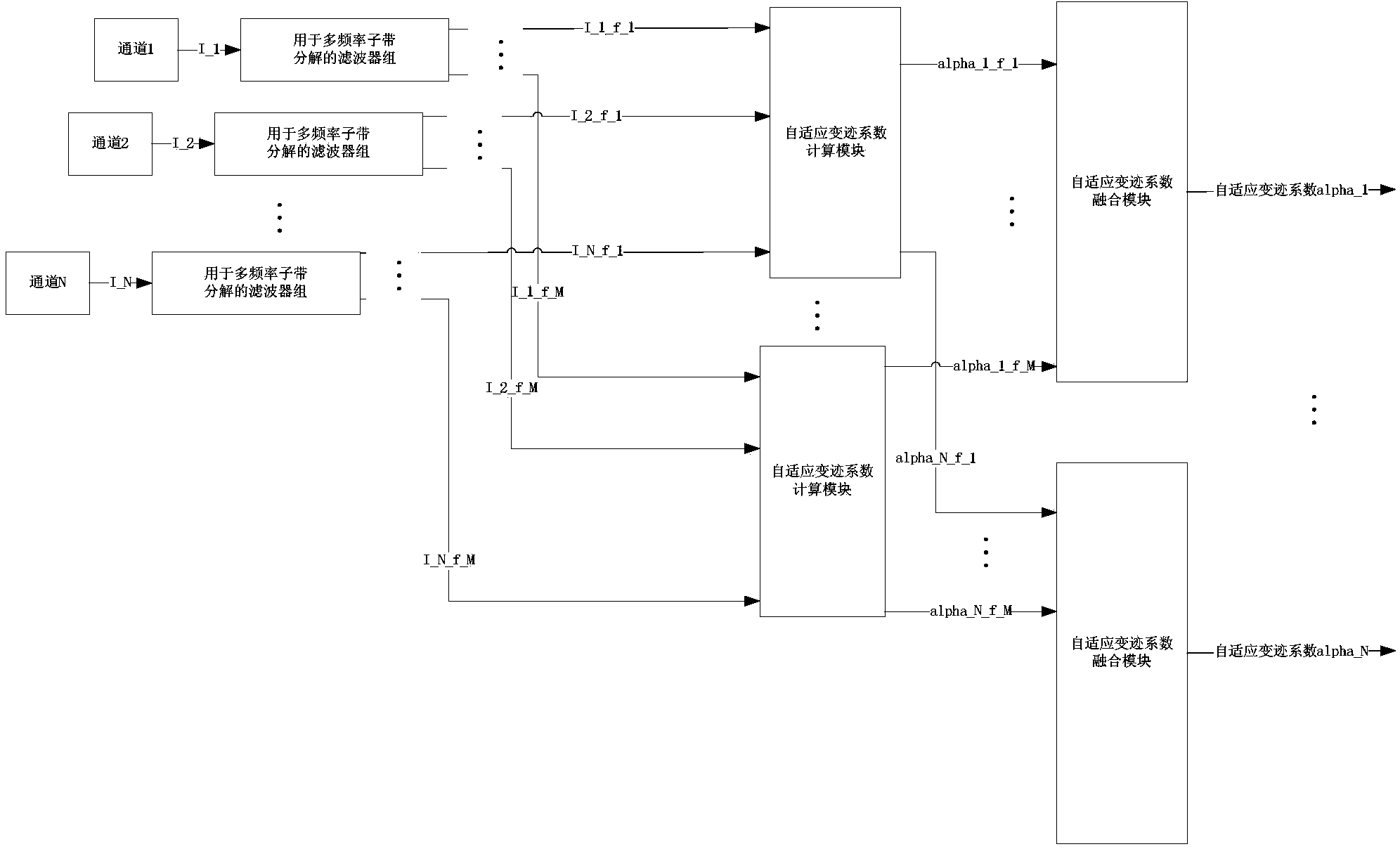Self-adaption apodization method based on phase coherent information
A phase coherence and phase information technology, applied in the field of signal analysis, can solve the problems of off-axis signal interference, weighted values not associated with received data, complex calculation, etc., so as to reduce low lateral resolution, improve lateral resolution, and calculate process simple effect
- Summary
- Abstract
- Description
- Claims
- Application Information
AI Technical Summary
Problems solved by technology
Method used
Image
Examples
Embodiment 1
[0031] like figure 1 As shown, an adaptive apodization method based on phase coherent information, the specific steps are as follows:
[0032] Step 1: Classical analog-to-digital conversion (A / D) of the signals obtained from each channel.
[0033] Step 2: Perform initial delay and dynamic focus processing on the signal obtained through the processing of Step 1, and obtain the processed signal of each channel I_i, 1≤i≤N, where N is the number of channels; at the same time, delay each channel signal by several clock beats. , and wait for the adaptive apodization coefficient to be obtained.
[0034] Step 3: Hilbert transform is performed on each channel signal I_i, and the corresponding phase information Phase_i of each channel is obtained through the CORDIC algorithm.
[0035] Step 4: Average the channel phase information obtained in Step 3 As the scanning depth increases, the receiving aperture gradually increases, and N gradually increases.
[0036] Step 5: On the basis o...
Embodiment 2
[0043] like figure 2 , 3 , 4: where image 3 for figure 2 The sub-module of , shows the schematic diagram of the multi-frequency sub-band decomposition and the calculation module of the adaptive apodization coefficient; Figure 4 for figure 2 The sub-module of , shows the schematic diagram of the adaptive apodization coefficient calculation module. The specific implementation steps are as follows:
[0044] Step 1: Classical analog-to-digital conversion of the signals obtained from the individual channels.
[0045] Step 2: as figure 2 As shown, perform initial delay and dynamic focus processing on the signal obtained through the processing of step 1, and obtain the processed signal of each channel I_i, where 1≤i≤N, where N is the number of channels; such as image 3 As shown, perform multi-frequency subband decomposition on each channel signal to obtain the subband signal I_i_I_j of each channel signal, 1≤j≤M, where M is the number of signal decomposition frequencies, ...
PUM
 Login to View More
Login to View More Abstract
Description
Claims
Application Information
 Login to View More
Login to View More - R&D
- Intellectual Property
- Life Sciences
- Materials
- Tech Scout
- Unparalleled Data Quality
- Higher Quality Content
- 60% Fewer Hallucinations
Browse by: Latest US Patents, China's latest patents, Technical Efficacy Thesaurus, Application Domain, Technology Topic, Popular Technical Reports.
© 2025 PatSnap. All rights reserved.Legal|Privacy policy|Modern Slavery Act Transparency Statement|Sitemap|About US| Contact US: help@patsnap.com



